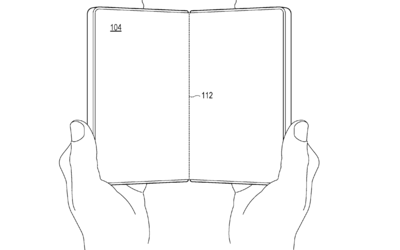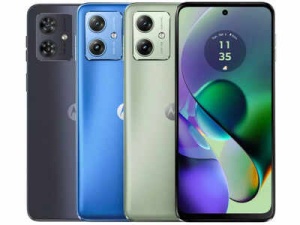Microsoft is reportedly exploring a new direction for foldable devices after the discontinuation of its Surface Duo smartphone line. A recent patent application suggests the tech giant is developing a novel hinge mechanism aimed at improving the durability and aesthetics of foldable phones.

The patent application, filed on February 29 with the United States Patent and Trademark Office, details a "spine cover plate" concept. This technology focuses on a single-hinge system designed to protect the device's structural integrity.
The application suggests a book-style design, reminiscent of the Samsung Galaxy Z Fold. The core innovation lies in the spine cover plate, which aims to safeguard the single-hinge system.
The key difference between conventional hinges and Microsoft's design is the spine cover's automatic adjustment during opening and closing. This aims to eliminate gaps around the hinge, offering superior protection against dust and water ingress. Currently, Samsung's foldables offer an IPX8 rating, providing water resistance only.
The patent suggests that the new hinge mechanism could minimize the visibility of the hinge crease, a common issue in foldable devices.
Furthermore, Microsoft outlines methods to potentially reduce the overall thickness of the foldable smartphone. This involves allowing the spine cover plate to move closer to the device's hinge when folded.
Microsoft explains in the patent that retracting the spine cover plate towards the central spine reduces the width of the folded computing device, enabling easier and more comfortable handling.
The smartphone market is actively seeking solutions to eliminate the crease in foldable displays. While some manufacturers have implemented water-drop folding mechanisms to mitigate the issue, a truly crease-free foldable remains elusive.
The durability of foldable devices is a crucial consideration due to their moving parts. The practicality of adding another movable component to the foldable mechanism remains to be seen, despite the potential benefits described in Microsoft's patent application.
Older articles
 Indian Astronaut Joins ISS: Shukla's Mission Ushers in New Era for India's Space Program
Indian Astronaut Joins ISS: Shukla's Mission Ushers in New Era for India's Space Program
 Ashada Gupt Navratri 2025: Unveiling Dates, Sacred Rituals & Hidden Significance
Ashada Gupt Navratri 2025: Unveiling Dates, Sacred Rituals & Hidden Significance
 Rishabh Pant's Unconventional Batting Redefining Cricket, Says Greg Chappell
Rishabh Pant's Unconventional Batting Redefining Cricket, Says Greg Chappell
 Moto G54 Price Slashed in India: Check Out the New, Lower Cost
Moto G54 Price Slashed in India: Check Out the New, Lower Cost
 JPG to PDF: A Graphic Designer's Guide to File Conversion and Quality Preservation
JPG to PDF: A Graphic Designer's Guide to File Conversion and Quality Preservation
 'The Traitors' Star Apoorva Mukhija Accuses Sudhanshu Pandey of Misogyny and Verbal Abuse After On-Screen Drama
'The Traitors' Star Apoorva Mukhija Accuses Sudhanshu Pandey of Misogyny and Verbal Abuse After On-Screen Drama
 Van der Dussen to Captain South Africa in T20I Tri-Series Against New Zealand and Zimbabwe
Van der Dussen to Captain South Africa in T20I Tri-Series Against New Zealand and Zimbabwe
 20 Minutes to a Healthier Brain and Heart: Neurologist's Simple Strategies to Combat Cholesterol, Blood Pressure, and Dementia Risk
20 Minutes to a Healthier Brain and Heart: Neurologist's Simple Strategies to Combat Cholesterol, Blood Pressure, and Dementia Risk
 England's Audacious Batters Claim They Could Have Chased Down 450 in First Test Win Over India
England's Audacious Batters Claim They Could Have Chased Down 450 in First Test Win Over India
 Popular Finance YouTuber "financewithsharan" Hacked: Security Measures to Protect Your Account
Popular Finance YouTuber "financewithsharan" Hacked: Security Measures to Protect Your Account